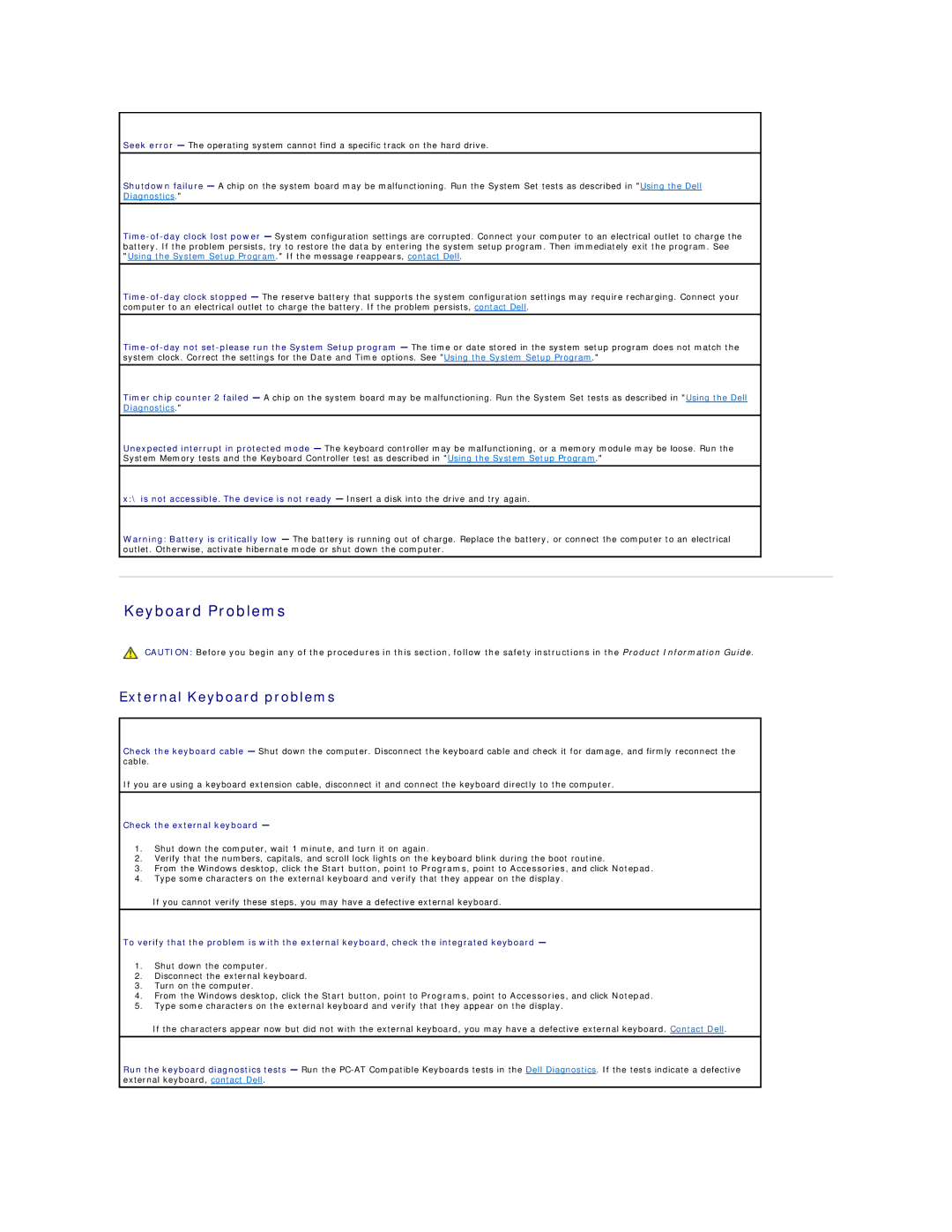
Seek error — The operating system cannot find a specific track on the hard drive.
Shutdown failure — A chip on the system board may be malfunctioning. Run the System Set tests as described in "Using the Dell Diagnostics."
Timer chip counter 2 failed — A chip on the system board may be malfunctioning. Run the System Set tests as described in "Using the Dell Diagnostics."
Unexpected interrupt in protected mode — The keyboard controller may be malfunctioning, or a memory module may be loose. Run the System Memory tests and the Keyboard Controller test as described in "Using the System Setup Program."
x:\ is not accessible. The device is not ready — Insert a disk into the drive and try again.
Warning: Battery is critically low — The battery is running out of charge. Replace the battery, or connect the computer to an electrical outlet. Otherwise, activate hibernate mode or shut down the computer.
Keyboard Problems
CAUTION: Before you begin any of the procedures in this section, follow the safety instructions in the Product Information Guide.
External Keyboard problems
Check the keyboard cable — Shut down the computer. Disconnect the keyboard cable and check it for damage, and firmly reconnect the cable.
If you are using a keyboard extension cable, disconnect it and connect the keyboard directly to the computer.
Check the external keyboard —
1.Shut down the computer, wait 1 minute, and turn it on again.
2.Verify that the numbers, capitals, and scroll lock lights on the keyboard blink during the boot routine.
3.From the Windows desktop, click the Start button, point to Programs, point to Accessories, and click Notepad.
4.Type some characters on the external keyboard and verify that they appear on the display.
If you cannot verify these steps, you may have a defective external keyboard.
To verify that the problem is with the external keyboard, check the integrated keyboard —
1.Shut down the computer.
2.Disconnect the external keyboard.
3.Turn on the computer.
4.From the Windows desktop, click the Start button, point to Programs, point to Accessories, and click Notepad.
5.Type some characters on the external keyboard and verify that they appear on the display.
If the characters appear now but did not with the external keyboard, you may have a defective external keyboard. Contact Dell.
Run the keyboard diagnostics tests — Run the
